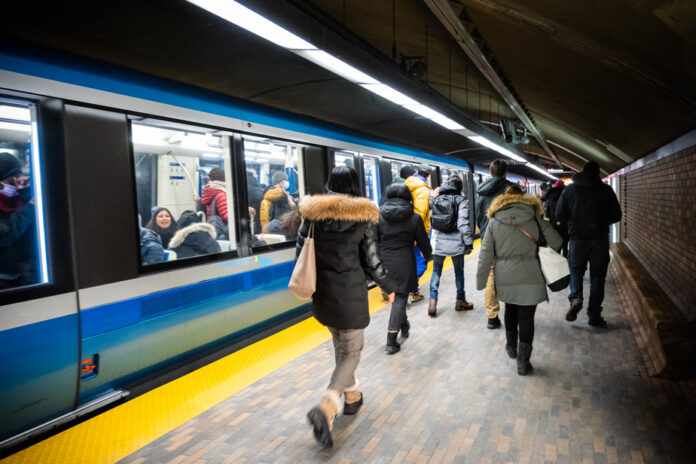The Legault government will this year launch a lifeline of 400 million to transport companies which are crying out for famine. But the long-term challenge is huge: Transport Minister Geneviève Guilbault will have to find a solution to help them, while finding new revenue to finance her own transport projects.
Time is running out for Ms. Guilbault, as her government still aims to reduce greenhouse gas (GHG) emissions by 37.5% by 2030 compared to 1990. Much of this effort involves reducing emissions. GHG reductions in the transport sector, in particular by improving the public transport offer.
However, the pandemic has damaged transport companies. Quebec recognizes that “the normalization of telework” and the decrease in traffic it causes, combined with “the general increase in operating costs”, have weakened the financial situation of transport companies.
What do you think of this budget from Minister Eric Girard?
In the short term, Ms. Guilbault will therefore offer 400 million for the year 2023, “the time to put in place the solutions that will have been identified following the consultation tour”. The Legault government also invites Ottawa to “contribute to this effort”.
But the Alliance for the financing of collective transport in Quebec (TRANSIT) estimates “that there would be a shortfall of 500 million for the financial year 2022-2023 in the Montreal region”. TRANSIT also estimates that “if nothing is done for all transport companies in Quebec, the Association du transport urbain du Québec (ATUQ) fears an annual shortfall of 900 million for the year 2027”.
At the same time, the Ministry of Finance warns that the fund financing the road network as well as public transport is in the red, as La Presse had written this fall. Put simply, the revenues of the fund financing the road network and public transport (Terrestrial Transport Network Fund, FORT) are growing much more slowly than its expenditure.
Revenue growth: 1.3%
Spending growth: 5.9%
In 2027-2028, the Ministry of Finance forecasts an annual deficit of 1.7 billion, which will have to be absorbed by all taxpayers, who already finance part of the road infrastructure.
The FORT is financed in particular by the tax on fuels, the rights on the driving licenses and those on the registration. It is based on the principle of user pays. They are the ones who pay for major projects such as the “extension of Route 138, the repair of the Louis-Hippolyte-La Fontaine tunnel, the reconstruction of the Île d’Orléans bridge, the extension of the blue line of the Montreal” or the Quebec tramway, we note.
The Ministry of Finance is aware of these findings. “Solutions […] will need to be identified,” the budget reads.
This problem was already on the radar screen of the Legault government in 2019, when the former Minister of Transport, François Bonnardel, launched a project on mobility. It already pointed out that an “imbalance could arise […] due to improved fuel efficiency of vehicles and a higher proportion of electric vehicles in the fleet” which reduce income, and spending on increase due to “major investments required to maintain assets”.
But despite a regional tour with 18 stops, 240 “sustainable mobility partners” met and 58 briefs, no decision was made before the general elections of 2022. In the fall, François Bonnardel had promised that he “n’t had no plans to add new taxes in the next few years”.
It will therefore be up to Geneviève Guilbault to solve this other problem.
In addition, there is new money for the environment, since this year again, the carbon market – financed in large part by motorists – is paying more than expected: Quebec is adding 1.3 billion to its fight against global warming. In total, it forecasts spending of 9 billion between 2023 and 2028.
However, we will have to wait until the spring to find out what the Minister of the Environment, Benoit Charette, will do with these sums. The same goes for the creation of a “Blue Fund” which provides for expenditure of 100 million per year on average.
It is unclear exactly how it will be funded. Part of its revenue will come from an increase in the water charge paid by industrialists, who currently pay only 3 million per year to pump water for different uses. We will have to wait for the tabling of a bill, later in the spring, to find out how they will be increased. It will also be necessary to be patient to know what this money will be used for.
The “Nature Plan 2030”, with a budget of just under 100 million per year on average, provides for the creation of new protected areas. It will also finance the fight against invasive alien species and the recovery plan for threatened and vulnerable species.
In 2020, Quebec emitted 74 megatonnes of GHGs. To reach its target, it will have to reduce its pollution emissions to 53 megatonnes. So far, Mr. Charrette’s plan only achieves 51% of that effort.















